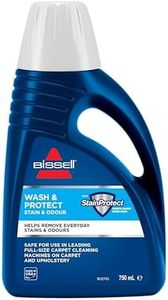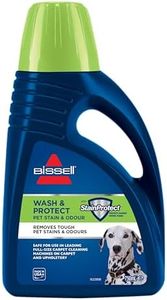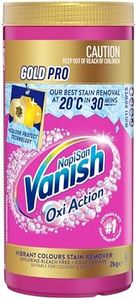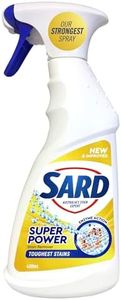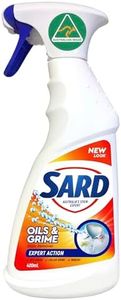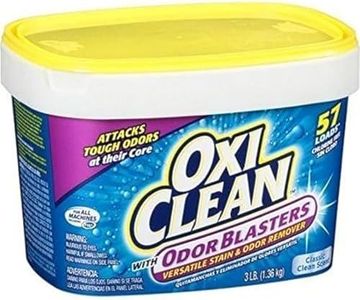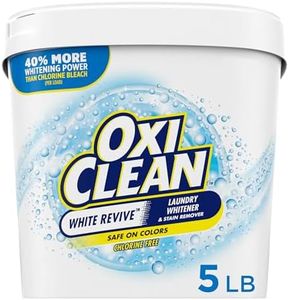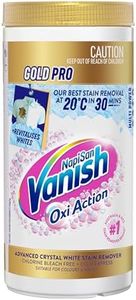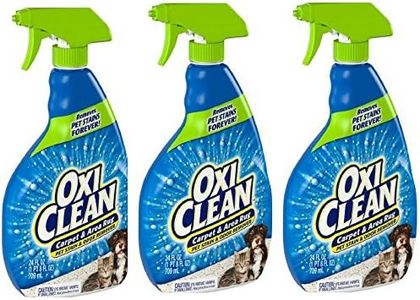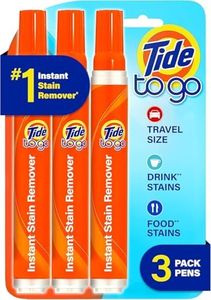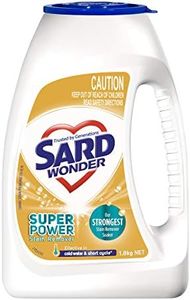We Use CookiesWe use cookies to enhance the security, performance,
functionality and for analytical and promotional activities. By continuing to browse this site you
are agreeing to our privacy policy
10 Best Stain Removers
From leading brands and best sellers available on the web.By clicking on a link to a third party's website, log data is shared with that third party.
Buying Guide for the Best Stain Removers
Choosing the right stain remover can make your laundry routine a lot easier and help you keep your clothes, upholstery, and carpets looking fresh and clean. The best stain remover for you depends on the type of stains you commonly deal with, the fabrics or surfaces you want to treat, and any sensitivities or environmental concerns you might have. Understanding the main specifications will help you match your needs to the best available options.Type of Stain RemoverThis refers to the physical or chemical format of the stain remover, such as liquid, spray, stick, powder, gel, or wipes. The type matters because certain formats are easier to use for specific purposes—for example, sticks and pens are great for on-the-go spot treatment, sprays are handy for larger areas, and powders are often used for soaking. If you mostly deal with spills when out and about, a portable stick or wipe is helpful. For laundry, a liquid or spray can be more effective and easier to apply over larger fabrics.
Stain Types TargetedSome products are formulated to tackle specific stain groups—like oils, proteins (like blood or grass), tannins (from wine or coffee), or dyes. It’s important because not all removers are equally effective on every kind of stain. They will typically mention if they are general-purpose or specialized. If your main problem is food stains, look for a remover that highlights grease and protein removal; for kids’ clothes, choose those that excel on grass or ink.
Safe Surfaces/Fabric CompatibilityThis specification outlines which materials the product can be safely used on, such as clothing fabrics (cotton, wool, synthetics), carpets, or upholstery. Some stain removers can damage delicate materials or leave marks, so check if a remover is labeled as safe for your fabric type. If you often treat delicate fabrics like silk or wool, pick a remover that is marked as gentle or suitable for those materials. For general-use on sturdy items, an all-fabric remover might be sufficient.
Application MethodThis tells you how the stain remover is used—whether you spray, rub, soak, or blot it onto the stain. The method affects both convenience and effectiveness. Some require pre-soaking or scrubbing, others just need to be sprayed on before washing. Choose an application method that matches your lifestyle; for quick spot removal, a spray or pen may be best, but for tough, set-in stains, a soak or pre-wash treatment can provide better results.
Scent and SensitivityMany stain removers have added fragrances, but some are unscented or low in allergens for sensitive users. If you or your family have allergies or are sensitive to chemicals and scents, opt for fragrance-free or hypoallergenic versions. If you prefer a fresh smell, a scented version may be more appealing, but always check for possible irritants.
Eco-FriendlinessThis refers to whether the remover uses biodegradable, non-toxic ingredients and if it’s safe for the environment. Eco-friendly options are good for those concerned about chemicals going into wastewater or the impact of ingredients on nature. If environmental impact matters to you, look for labels such as plant-based, biodegradable, or phosphate-free.
